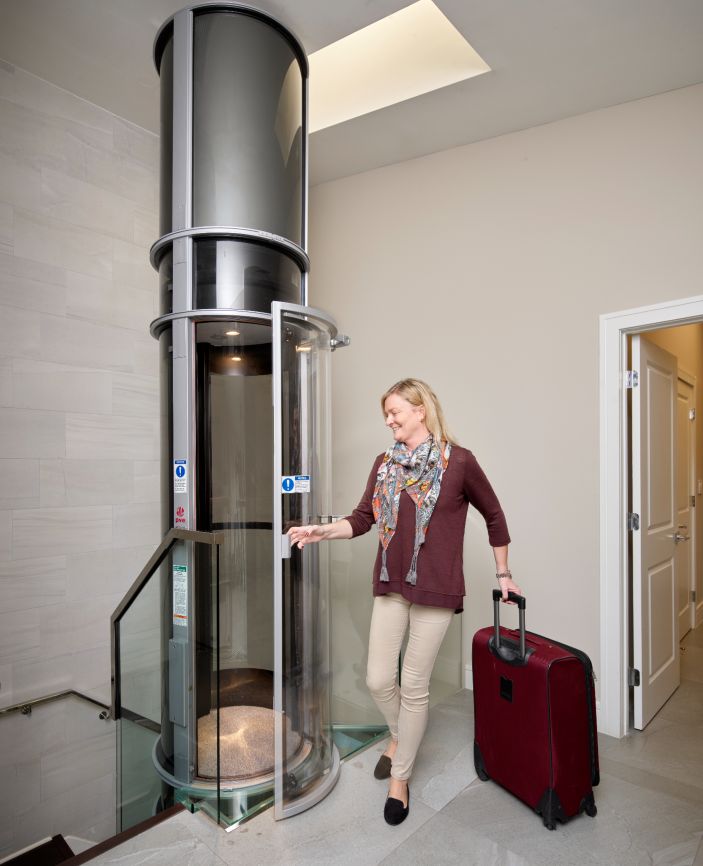We Maintain Lifts to the Highest Criteria: Reliable Service for All Lift Kind
We Maintain Lifts to the Highest Criteria: Reliable Service for All Lift Kind
Blog Article
Exploring the World of Elevators: Common Problems Faced by Numerous Lift Mechanisms
As we browse through the upright transportation systems of modern-day buildings, elevators stand out as an essential element of our day-to-day lives. From hydraulic lifts to grip systems and machine-room-less layouts, each lift type comes with its collection of usual issues.
Hydraulic Elevators
Hydraulic elevators, usually preferred for low-rise buildings, use fluid pressure to manage the activity of the lift car (lift repair companies). This mechanism involves a hydraulic pump pushing oil into a cylinder, creating the lift to relocate in the wanted instructions. While hydraulic lifts are recognized for their smooth and quiet operation, they do come with their own set of typical problems
One common problem with hydraulic lifts is oil leak. Furthermore, problems with the control system, such as defective valves or a malfunctioning pump, can cause disruptions in the elevator's activity.
Routine maintenance and prompt repairs are important to ensure the smooth performance of hydraulic lifts. By attending to these common concerns proactively, structure proprietors can reduce downtime and ensure the safety and security and efficiency of their vertical transportation system.
Grip Lifts
When taking into consideration upright transport systems in structures, one more usual type other than hydraulic lifts is the traction lift. Traction lifts operate utilizing a system of ropes and counterweights that relocate the elevator cars and truck by grasping onto the hoist ropes. This mechanism enables smoother and much faster vertical transport contrasted to hydraulic systems.
Among the common issues dealt with by grip elevators is rope wear. The consistent motion of the ropes within the traction system can lead to deterioration gradually, potentially triggering the lift to malfunction or end up being risky for usage. Regular examinations and maintenance of the ropes are necessary to guarantee the lift's proper functioning and safety and security.
One more concern that traction elevators might experience is connected to the control system. Issues with the control system can result in concerns such as unpredictable activity, hold-ups in response times, or perhaps complete closures. Normal testing and upkeep of the control system are crucial to avoid such concerns and guarantee the lift's integrity.
Machine-Room-Less (MRL) Elevators

Among the crucial components of MRL elevators is the portable gearless traction device that is mounted within the hoistway. This equipment successfully drives the lift auto without the requirement for cumbersome devices located in traditional grip lifts. In addition, MRL lifts generally use a counterweight system to balance the cars and truck, more improving their energy performance.
In click spite of their advantages, MRL lifts may encounter difficulties associated to repair and maintenance as a result of the constrained area for devices installment. Availability for servicing components within the shaft can be limited, calling for specialized training for professionals. Correct maintenance schedules and routine assessments are important to ensure the continued smooth procedure of MRL elevators.
Overloading and Weight Restriction Issues
Are elevators outfitted to deal with excess weight loads efficiently and securely? Straining and weight limit problems are important issues in elevator procedures. Elevator manufacturers layout raises with details weight abilities to ensure guest safety and security and devices long life. Going beyond these weight limitations can result in different troubles, consisting of mechanical failings, delays, and safety dangers.
When elevators are strained, it puts excessive stress on the motor, cables, and other components, possibly triggering break downs or malfunctions. Safety and security mechanisms such as sensors and overload sensing units remain in place to stop elevators from relocating if they identify excess weight. Furthermore, surpassing weight limitations can result in raised energy consumption and damage on the lift system.
To reduce overwhelming issues, constructing supervisors should prominently show weight limits in elevators and educate residents on the relevance of adhering to these constraints - lift repair companies. Regular maintenance checks by qualified professionals can additionally help make sure that lifts are operating within safe weight parameters. By attending to overloading and weight limit problems proactively, structure proprietors can improve lift security and performance
Electrical System Failings
Going beyond weight limits in lifts can not only result in mechanical issues however likewise possibly add to electrical system failings discover this info here within the lift framework. Electric system failings are an important concern in elevator operation, as they can trigger unforeseen closures, breakdowns, or also safety hazards. One common electrical problem is the overheating of elements because of extreme present circulation triggered by straining the lift past its ability. This can bring about harm to the Learn More control, circuitry, or electric motor systems, leading to expensive repair services and downtime.
In addition, power rises or changes in the electrical supply can also disrupt the elevator's procedure, affecting its efficiency and safety and security. These electric disruptions can damage delicate lift components such as control board, circuit card, or sensors, causing system failings. Routine upkeep and evaluations are essential to recognize and address potential electric problems promptly, making certain the risk-free and reliable procedure of elevator systems. By sticking to weight restrictions and carrying out regular electrical system checks, structure proprietors can minimize the danger of electric failings in elevators.
Conclusion

Hydraulic elevators, often liked for low-rise buildings, make use of fluid pressure to control the motion of the lift vehicle.When taking into consideration upright transportation systems in buildings, another typical type aside from hydraulic elevators is the grip lift. Grip elevators operate using a system of ropes and weights that relocate the elevator vehicle by gripping onto the hoist ropes. Unlike standard lifts that call for a separate maker area to house the tools, MRL elevators integrate many of the parts within the shaft, eliminating the requirement for a dedicated device area.In final thought, lifts face typical problems such as hydraulic breakdowns, traction system failures, and electrical system issues.
Report this page